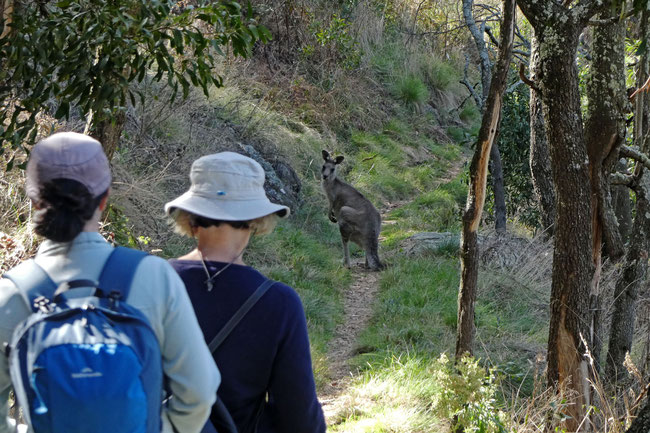
Australia is known for its particular set of strange animals. Strange as kangaroos are, everyone in the world knows about them (medium-large animals that travel around our open grasslands using prodigious hops) so they are not surprising. What many people, even some Australians, don't know about is a group of kangaroos that have reverted to the arboreal habitat of their ancient ancestors - tree kangaroos.
I'm visiting Far North Queensland which is where our tree kangaroos live, and I've managed to catch sight of a few of these unusual animals. They are not easy to spot as they live in the tops of tall trees, 20-30 metres above the ground. I'm not pulling your leg here – these kangaroos really do live in the tops of trees; even as I write this I can hardly believe it myself!
Adapting to a life in trees
Tree kangaroos do not seem particularly adapted to their life. Their front legs are a bit longer and their front paws are larger and better at gripping than other kangaroos, and their tail is longer and has lost its rigidity so they can hang it down vertically below the branch that they are on for balance, but that's about it. Their back paws seem hardly adapted at all, so they stay very much on top of the branch as they move around. Tree kangaroos certainly lack the arboreal adaptions that a koala has, with its powerful double opposable thumbs, and strong curved claws.
Tree kangaroos can, however, move their back legs independently, which other kangaroos cannot do. (I only just found that out - I knew that kangaroos always move their back legs together, but I didn't know that they HAD to.)
For reference, here’s a regular kangaroo, an eastern grey I believe, on a walking track on Mount Canobolas in Central-West New South Wales:
And here’s a tree kangaroo perched in the fork of a tree:
They sit on a branch in the top of a tree with much the same stance as any other kangaroo on the ground:
Here’s some video of one of the tree kangaroos moving around in the canopy:
One remarkable ability that they do have is that they can jump down to the ground from fifteen metres up in a tree! Tree kangaroos may be the original drop bears - imagine have a fifteen kilogram tree kangaroo land on you head after falling fifteen metres!
Food
Tree kangaroos eat the leaves of a range of trees – they aren’t fussy like koalas, which only eat the leaves of a few species of eucalypts.
Finding tree kangaroos
Tree kangaroos are notoriously hard to find, because they are high up in the usually dark canopy, are well camouflaged, and they don’t move around very much, so they usually go unnoticed.
The tree kangaroos I saw live in a tiny patch of bush on the Nerada tea plantation near Malanda, on the Atherton Tableland, where they are regularly spotted by visitors. The plantation has a gift shop café which promotes the wild tree kangaroos as an attraction.
Purple swamp hens
The tree kangaroos aren't the only wild native animals that live at the plantation.
The tea plants at Nerada grow as a shrub and are harvested by what amounts to a giant lawn mower with blades set to about a metre-and-a-half above the ground to take off the new shoots growing from the tops of the plants.
This process creates a vast, smooth, elevated plain, which is inhabited by purple swamp hens. Purple swamp hens usually live in swamps and have huge feet that allow them to walk on aquatic vegetation near the surface of water. Here they use their big feet to walk around on the tea-plant plain. Here’s a small flock of them on the tea plain:
Here’s a couple of them closer up:
Tags
If you enjoyed this blog post, you can find related posts under these headings:
Share this The Journey and the Destination post using your favourite social media:
Would you like to add something, or ask a question? Add a comment below (you can leave the 'Website' field blank):








Nishita Khanwani (Thursday, 18 August 2022 20:43)
Enjoyed reading about tree kangaroos. These mammals are depleting in number due to hunting and habitat destruction. I wish the authority take concrete steps to protect them and provide a sustainable environment.